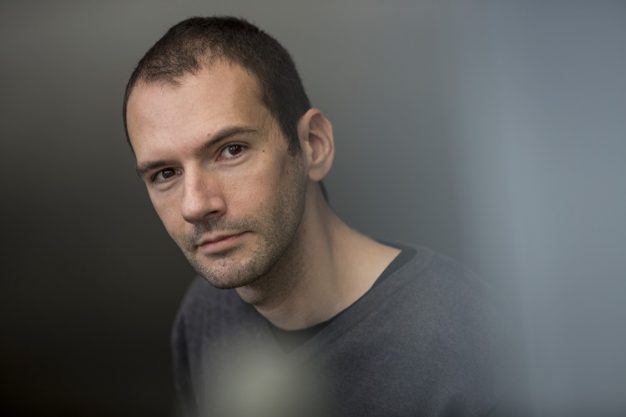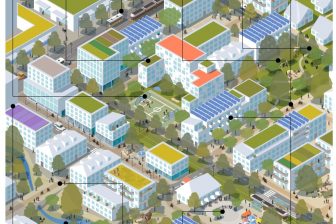
The commercialisation of child friendly cities and other challenges
During the upcoming Child in the City seminar in Antwerp, Sven De Visscher will be part of the roundtable discussion on qualitative vertical housing environments for children. In this interview, Sven gives us insight into his work, challenges facing the child friendly cities initiative and what we can expect from the roundtable discussion.
Sven De Visscher is a lecturer at University College Ghent in Belgium and a member of Child in the City’s Scientific Program Committee (SPC). He is part of the urban education team in the department of social work that develops research and teaching projects about education and social work in urbanising contexts. Sven holds a PhD degree in Educational Sciences, based on a study of the social pedagogical meaning of the neighbourhood for children. His main research topics include child friendly cities, childhood studies, urban public space, community development and urban regeneration.
You co-wrote ‘Learning the City: Cultural Approaches to Civic Learning in Urban Spaces’, what made you decide to tackle this subject?
A cultural studies perspective on child friendly cities teaches us that not only physical infrastructures and social relations contribute to childfriendliness. The city also carries an important symbolic dimension. Referring to culture as an ongoing communicative process between subjects and objects producing (symbolic) meanings, the production of child friendly space appears as an ongoing interaction among subjects, symbolic frameworks and dynamic infrastructures. In our book, we gathered 5 papers from influential academics in this field, who explore different understandings of civic learning in, through and as a result of urban spaces.
What is the biggest challenge regarding the creation of child friendly cities?
I notice a growing international trend towards commercialisation of child friendly cities. Child friendliness has become a label or trademark that companies use to brand their products for young, affluent families. Also, local governments are sometimes using this label as a strategy in the interurban competition to attract young middle class families to their city or town. Just as one illustration, I recently came across a sign that indicated a ‘child friendly playground’. I think that this commercialization of childfriendliness is an impoverishment because on the one hand it reduces the meaning of childfriendliness to the market principle of demand and supply. And on the other hand it excludes large groups of children and young people. Therefore I think it is important that we keep underlining the UNCRC as a crucial foundation of the child friendly city: to support universal human rights of every child, and particularly those of the most disadvantaged groups within a local community, such as refugee children, children in poverty, disabled children, etc.
At the Children in the Sustainable City Seminar in Antwerp, you will be a part of the roundtable discussion on vertical housing what can delegates expect?
It is clear that the future of cities, towns and even rural villages will be characterized by increasing densification of their centers. If we want to safeguard the little bits of open unbuilt space and at the same time provide decent and healthy housing for our growing population, we will have to start living more closely together. Today we notice some reluctance in considering vertical housing as a good home environment for children. In this roundtable discussion, we don’t aim to go into the discussion of whether or not a vertical housing environment is desirable for families with children. We start from the knowledge that a growing number of children will live in some type of vertical housing in the near future, and work around the topic of spatial quality of such environments for and according to children and young people. We have collected three research teams presenting the results of studies on this topic. My own team will be presenting the results of interviews with children and teenagers. Professor Lia Karsten who is also an expert in this area, will then moderate a discussion and bring together the most important social, spatial, functional, cultural and political conditions for child friendly vertical housing environments.
In the book Education, Space and Urban Planning you wrote a chapter ‘Towards a Social Pedagogy of Urban Design’, can you tell us about that?
In this paper, I explore the particular interrelations between pedagogical theories and perspectives on design. Space matters in pedagogy. Not only as the context of pedagogical provisions or activities, but also as an educator in itself with diverse pedagogical assumptions and agendas that shape societal relations. The social and cultural position of children and young people in the city is largely influenced by design logic. As such, it is reasonable to state that urban designers have a pedagogical role, even when they are not referring to any intentional pedagogical program or theory. In the text I suggest to promote a social pedagogical perspective on urban planning and design, connecting child friendly planning processes with a critical analysis of the social and political position children take in the city. This can be done by organizing urban planning processes as collective and continuous learning processes about the meaning of a desirable future for the city. In such processes, children are addressed as competent citizens who contribute to the analysis of what their city or neighbourhood needs.
What is the main way Child in the City seminars and conference can help make a tangible difference to children’s rights?
Many people, now and in the past, have been voluntarily and independently building networks, promoting and organising the conferences and seminars. Two decades ago, Jan Van Gils initiated a European network of people who share a concern about children’s rights and aim to contribute to this case, each from their own perspective. After his retirement, Lia Karsten organized a new interdisciplinary scientific committee within the CITC foundation. As a result, today these conferences and seminars succeed in bringing together a large and very mixed audience of people working in governments, ngo’s, nonprofit organisations, academia and industry. Experts in health, education, technology, design, social work, planning, architecture, participation, and so much more. This is one of the strengths of the conferences and seminars and a strong basis for an interdisciplinary dialogue about how to continue to promote children’s rights on a local level in a collaborative way.
As a member of the Programme Committee for the Antwerp Seminar, what are you most looking forward to?
Childfriendliness and sustainability are very much intertwined. The UN Habitat II conference in 1996 already concluded firmly that children’s wellbeing is a good indicator for the overall sustainability and livability of a city. In Belgium, the topic of sustainability and climate justice is high on the agenda among young people. A group of young people in Antwerp initiated the Youth for Climate initiative. They have been organizing weekly national school strikes on Thursdays since January, gathering up to 30000 children and young people, to put pressure on Belgian politicians to come out with concrete actions and policies for a more sustainable world. On the second day of the seminar, we will have someone from Youth for Climate included in a panel debate to reflect on the presentations and discussion of the seminar.
The third Child in the City International Seminar takes place in Antwerpen, Belgium on 20-21 May 2019. The early bird fee ends April 8th, so register now.





